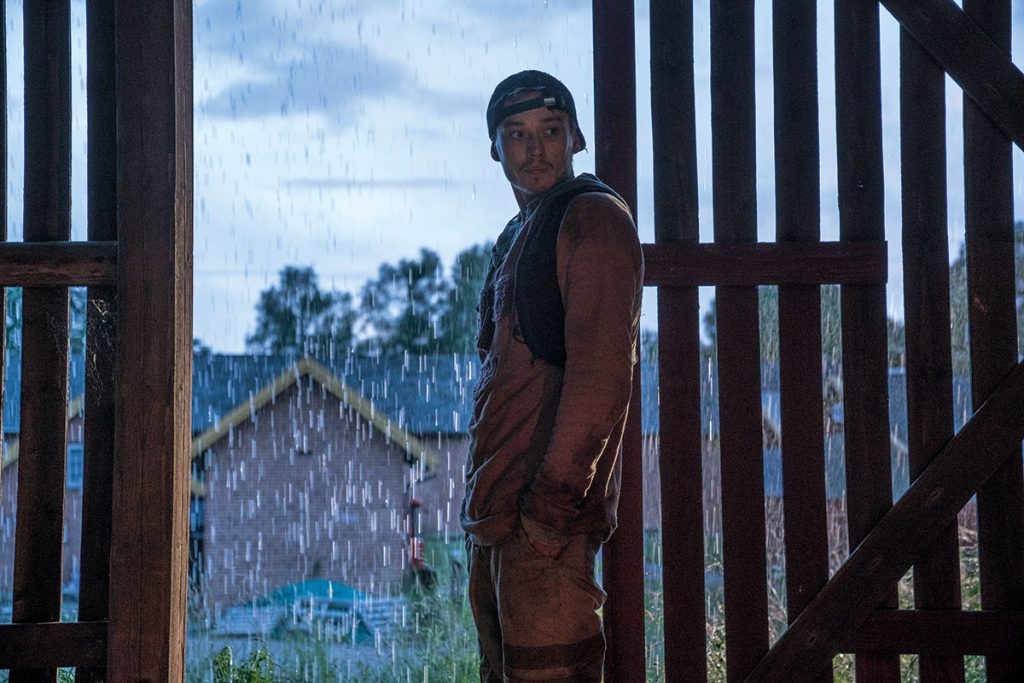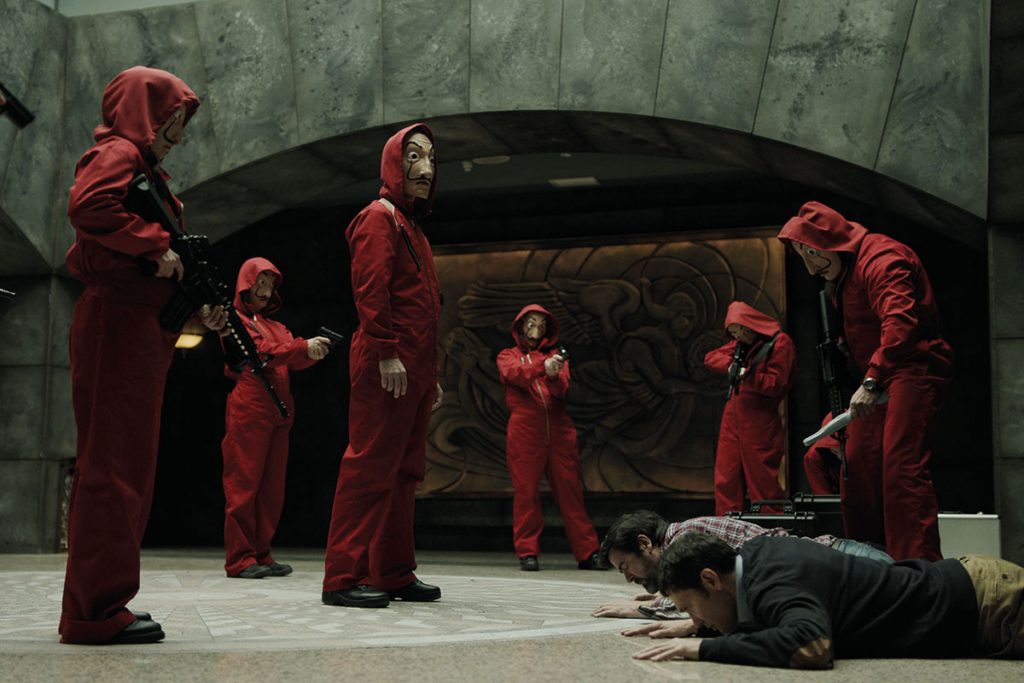
After more than 35 years of operation, TBI is closing its doors and our website will no longer be updated daily. Thank you for all of your support.
The big business of dubbing
 Quality dubbing will be the key to the continued growth of international drama consumption, and SVODs and networks alike are doubling up in investment in the business to get ahead of the curve. Kaltrina Bylykbashi reports
Quality dubbing will be the key to the continued growth of international drama consumption, and SVODs and networks alike are doubling up in investment in the business to get ahead of the curve. Kaltrina Bylykbashi reports
In the past two years, the dubbing business has exploded, outpacing subtitling for the first time as a result of the growing global investment in localised content.
Some of the biggest studios in the business are seeing an astronomical rise in revenue as consumers increasingly look to titles such as Netflix’s Dark (pictured, top), The Rain and La Casa De Papel (Money Heist) for entertainment.
Leading localisation platform Zoo Digital, which is attempting to transform the industry with a cloud-based solution, saw revenues jump by 73% to $28.6m in July 2018 compared to the year prior – only stalling later in the year to staff up to meet client demand. Zoo pointed to a shift in requests for dubbing over subtitling for the revenue jump.
Elsewhere, global localisation studio BTI Studios told TBI that dubbing made up a mere 3% of its revenue in 2010 and has since jumped to 61%, with subtitling making less than 40% in revenue.
These are two of the many studios TBI has spoken to that have reported big business in dubbing as a result of the recent boom in international drama.
Needless to say, international titles are going through a growth period. Netflix, which spent $12bn on content in 2018, is pledging to increase investment in European content by a third in 2019 alone.
This March, during a rare Q&A session with press, the streamer noted that the growth in localised content and dubbing would be key to taking on upcoming competitors such as Apple and Disney.
Currently, Netflix plans to roll out dubbed versions of its content in 27 languages. “We’re taking this new initiative very seriously,” said Debra Chinn, Netflix’s international dubbing director.
Quality counts
Netflix chief product officer Greg Peters puts the increased viewership of international titles down to better dubbing entirely.
Nearly 90% of new primetime shows originating in the EU over the past three years have been released in two or fewer European countries, he says. But with seven European dub languages and 15 subtitle languages available in Netflix’s toolkit, it “explodes the potential viewership of European shows across the whole continent.”
Europeans have had a long-standing tradition of dubbing, making consumers more open to it. However, Peters says the real prize will be reaching US audiences, where dubbing is being accepted into the mainstream for the first time.
“Unfortunately there was a big hurdle there. When we surveyed people in the US versus those in Europe, a very high percentage of US viewers said they would never watch a film or TV series that was not in their native language.
“We had an instinct that the reality could be different if we did it well. And we found that when we presented US subscribers with international titles with both subtitles and great dubbing, we saw much higher viewing than was indicated in the survey.
“And most US members watched in dubs and were more likely to finish international shows when they are dubbed in English,” he says.
Quality, therefore, is going to be key to making Netflix’s international strategy successful.
At this year’s Berlin International Film Festival, Kelly Luegenbiehl, VP of international originals in Europe, said: “We’re trying to get better with the dubbing process and it’s something our team is working really hard on. Each time they iterate a new title, they try and figure out things they could do to improve it.”
Netflix’s Post Partner Program (NP3), which certifies post-production partners that want to work with the company, highlights the company’s investment in this business, growing from 19 to 80 partners since 2017.
One NP3 partner told TBI that to qualify in the program it had to adhere to specific technical criteria in terms of security, quality and operations.
“Many other publishers have such a list as well, but it’s not out there in the public sphere,” they said.
No room for mistakes
Localised programming today is often premium drama by default, meaning that dubbing has had to become more elevated, faster and far-reaching.
In addition, the localisation process still divides opinion among consumers, many finding poor dubbing both frustrating and distracting.
“There’s no room for mistakes today, because clients don’t have time for mistakes,” says The Kitchen EVP Deeny Kaplan. “They’re very rigid; they’re strict. You have multiple levels of quality checks, for everything going from sound checks to music and mixing. All of it is scrutinised.”
The key to a successful dub lies in using native speakers, correct casting and proper adaptation, according to Kaplan. She says the dubbing of French drama Call My Agent is one example of a successful localisation process.
“It’s great and you really get it because it’s done right. And when a title’s done right they gain an international audience,” she says.
Deeper local ties also elevate the standard of dubbing, which is why players such as Netflix have been accelerating their ties with international studios.
Nexus TV – an NP3 partner – says that in Italy, for example, there has been a long-established culture of dubbing.
“Dubbing is an extremely well-established market in Italy because we’ve been dubbing since the 1930s,” says Mattia Fioravanti, a spokesperson for Nexus TV. “There was a decision made during the fascist era not to subtitle anything that passed through Italy. I would say that 99% of movies and TV shows in Italy are now dubbed.”
“A very skilled school of dubbing talent and actors has grown up in the territory during this time, so for us, the general public would never complain about the authenticity of dubbing or how movies and TV shows can lose value via the localisation process.”
A shifting business model
The quest for quality has changed the shape of the industry over the past few years entirely, according to Kaplan, whose key clients include NBC.
Both networks and SVODs are looking to centralise dubbing work, according to the exec, which means that one company is now expected to have multiple sites globally. My Kitchen currently has 12 sites in 12 languages.
“The beauty is that we create a template with time codes and character themes and narrative information, so that when it does need to be adapted into another language, we have those assets that allow us to easily create a consistency,” says Kaplan.
NP3 partner BTI also attributes its recent revenue success to owning and operating international studios.
“If you think about dubbing, it’s really hard to do without native language speakers, and if you’re listening to dub in your language and it’s not done well, it loses its creative impact,” says Chris Carey, BTI’s Americas MD.
“For us, the creative quality is the most important thing and the way to do that is to have a studio in every country. Not just the physical studio, but also a network of actors, editors and creative directors who know how to record the language voices, edit them, get them properly in sync and mixed, so that the dubbed language comes off as believable and natural.”
The strategy has paid off. Since 2008, BTI has acquired 10 studios, nearly tripling its revenue from €42m ($48m) to €105m ($119m). It has grown from owning three offices at launch in 1995 to 25 in 2019, and will continue to look for new areas of expansion.
Zoo, a Netflix Preferred Fulfilment Partner (NPFP) , has taken this principle one step further by launching a cloud-based dubbing platform in 2018. Project managers, translators and freelancers of all kinds can now collaborate on the platform, at any time, without the need for a bricks-and-mortar studio, which further breaks down barriers to tapping into talent all around the world.
Zoo has also begun to offer the platform to traditional dubbing studios, meaning that the efficiency and turnaround of dubbing projects could be vastly improved over the next few months.




